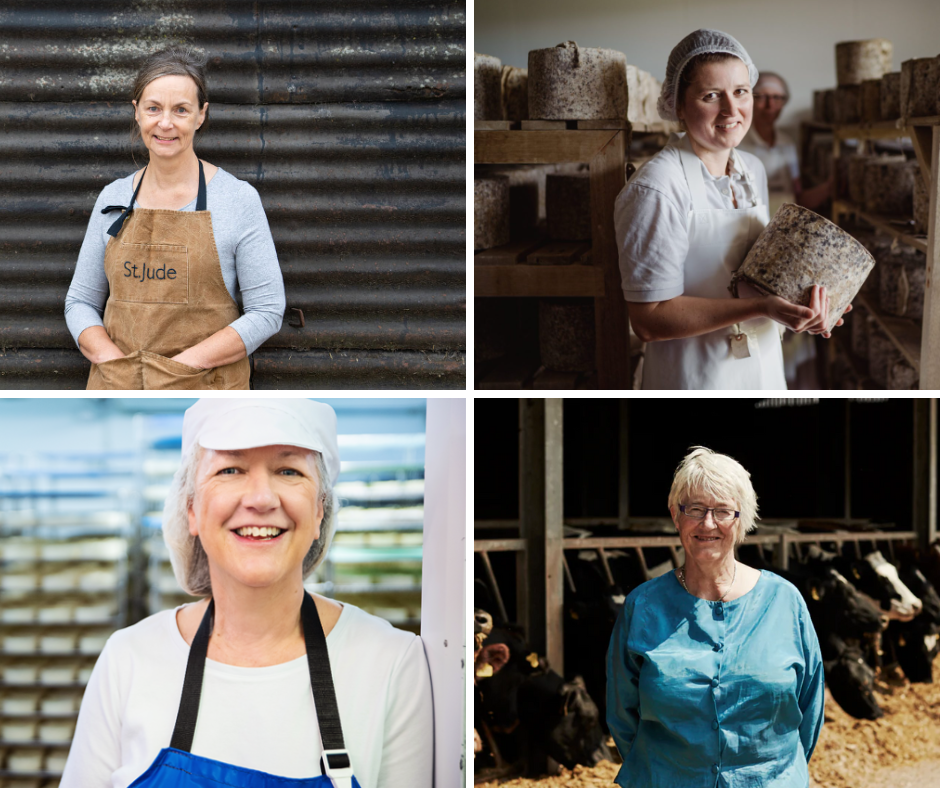A Taste of Credibility: Floridia Cheese Melbourne and Its Workmanship
A Taste of Credibility: Floridia Cheese Melbourne and Its Workmanship
Blog Article
Unlocking the Secrets of Artisanal Cheese Making: A Detailed DIY Guide
In the world of cooking workmanship, artisanal cheese making stands as a testament to the delicate equilibrium between custom and innovation. Each action in the procedure, from selecting the right milk to improving aging techniques, holds within it a wealth of knowledge passed down through generations. As we embark on this journey to demystify the art of producing splendid cheeses, we are encountered with a tapestry of keys and skills waiting to be unraveled. Join us as we explore the ins and outs of this old craft, where art, scientific research, and perseverance merge to generate flavors that tantalize the detects.
Selecting the Right Milk
When embarking on the journey of artisanal cheese production, the choice of milk plays a crucial function in determining the high quality and characteristics of the final product. The type of milk picked impacts the taste, structure, and overall profile of the cheese.
When choosing milk for cheese production, it is very important to consider the fat content. Greater fat material in milk can result in a creamier and richer cheese, while lower fat web content might bring about a drier and stronger appearance. Furthermore, the resource of the milk, whether from cows, goats, lamb, or buffalo, adds unique tastes and characteristics to the cheese (Floridia Cheese). Each type of milk brings its very own nuances, enabling for a vast array of cheese selections to be crafted based upon the selected milk. Inevitably, the option of milk is an essential decision that sets the foundation for an effective artisanal cheese-making endeavor.
Culturing and Coagulating
To launch the cheese-making procedure, the important steps of culturing and coagulating must be very carefully executed to change milk right into curds and whey. The type of culture utilized can considerably impact the flavor, structure, and ripening of the last cheese product.

The timing and temperature level control during culturing and coagulation are essential variables that influence the final end result of the cheese. Correct execution of these steps is vital to make sure the wanted appearance, taste, and consistency of the artisanal cheese being created.
Draining and Pressing Curds
After the milk healthy proteins have coagulated and the curds have been reduced to release whey, the next essential step in artisanal cheese making involves draining and pushing the curds to achieve the desired appearance and consistency of the last cheese product. The time for draining pipes can vary depending on the kind of cheese being made and the wanted dampness material.
Once the curds have adequately drained pipes, the following step is pressing. Pushing assists get rid of any type of remaining official site whey and compacts the curds to develop a strong cheese wheel. Pressing can be done using specialized cheese presses that apply gentle and consistent stress over a time period. The duration and stress used throughout pushing will affect the last appearance of celebrity, from soft and velvety to hard and firm. Correct draining pipes and pushing are critical actions that considerably influence the high quality and features of the artisanal cheese being produced.
Aging and Flavoring Techniques
Carrying out precise aging and flavoring strategies is pivotal in improving the depth and intricacy of artisanal cheeses, elevating their preference accounts to elegant levels of refinement and refinement. Aging plays a critical function in developing the unique flavors and appearances that distinguish artisanal cheeses. During the aging process, cheeses are saved in thoroughly managed settings where aspects such as air flow, humidity, and temperature are controlled to motivate the development of advantageous mold and mildews and microorganisms. This regulated setting permits celebrity to grow slowly, creating complicated fragrances and rich flavors.
Flavoring techniques likewise contribute considerably to the final taste of artisanal cheeses. Cheesemakers might choose to present additional flavors by incorporating active ingredients such as natural herbs, seasonings, and even fruits into the cheese throughout the manufacturing procedure. Furthermore, some cheeses are washed or rubbed with various liquids, such as brine or alcohol, to improve their tastes and textures.
Covering and Storing Cheeses

Verdict
In conclusion, grasping the art of artisanal cheese making entails carefully picking the best milk, complying with accurate culturing and coagulating procedures, draining and pressing curds effectively, and using various aging and flavor methods. By complying with these steps diligently and with interest to information, you can produce your own delicious and one-of-a-kind cheeses at home. Bear in mind to cover and keep your cheeses effectively to make sure ideal taste and texture development. Happy cheese making!
Each type of milk brings its own subtleties, allowing for a wide variety of cheese selections to be crafted based on the chosen milk.After the milk proteins have actually coagulated and the curds have been reduced to release whey, the next important action in artisanal cheese making involves draining pipes and pressing the curds to attain the preferred texture and uniformity of the final cheese item. The majority of cheeses ought to be wrapped in wax paper or cheese paper to allow them to breathe while protecting them from drying out. For cheeses that require to proceed aging, such as bloomy peels or washed rinds, ensure they are saved in a cool setting like a cheese cave or a fridge established to the suitable temperature. By paying interest to the covering and storage space of artisanal cheeses, cheese manufacturers and fanatics can protect the stability of these delicacies and totally appreciate article their complicated flavors.
Report this page